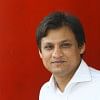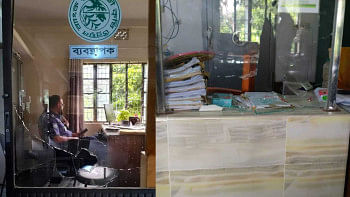Access to diabetes care in Bangladesh

Alamgir Hossain felt persistently exhausted for the past few months as the man in his early forties easily became tired even when doing light work at his grocery shop in Kaliganj upazila of Satkhira.
Hossain also found himself reaching for water and needing to urinate far more often than usual.
"Seeing my condition, a customer told me to check my blood glucose levels," he said.
Taking this advice into consideration, Hossain stopped by a local drug store for a finger-prick blood test on his way home.
After the result showed high blood sugar levels, he checked it again the next day at another drug store but the outcome remained the same.
Worried by his condition, Hossain went to the upazila headquarters to see a doctor who then asked him to do a more comprehensive blood test.
Upon getting the results, the doctor confirmed that Hossain has diabetes and duly prescribed him some medication and guidelines to follow.
"But even though the medicine is widely available, it is too costly for a small grocer like me, especially since the doctor said I have to take it for the rest of my life," he told The Daily Star.
Although diagnosis and treatment facilities for diabetes patients like Hossain have improved over the decades, a large number of people in the country remain unaware that they are suffering from the disease as it rarely shows any symptoms.
Besides, there are many areas in the country that still lack proper access to such facilities despite government efforts to expand clinical support in this regard, according to various health experts.
Dubbing the disease as a silent killer, they stressed on the need to increase awareness on diabetes and how to prevent it as early detection can save lives.
They also suggested that maintaining a disciplined diet, taking the prescribed medication and regular physical exercise are vital for those afflicted.
"The main problem is that most people do not know that they have diabetes," Md Sayef Uddin, secretary general of the Bangladesh Diabetic Samity (BADAS), told The Daily Star.
"If a patient is diagnosed with diabetes only after the symptoms become apparent, their physical condition could deteriorate in the meantime," he said.
"But a simple lifestyle modification could have solved the problem if detected early on," Uddin added.
Diabetes is a pandemic that is rising faster in developing countries like Bangladesh. The disease and its complications are major causes of death in most countries.
It is a chronic health condition that affects how the human body turns food into energy. The disease occurs either when the pancreas does not produce enough insulin (a hormone that regulates blood sugar, or glucose), or when the body cannot effectively use the insulin it produces.
Over time, insufficient insulin can cause serious health problems, such as heart disease, loss of vision, and kidney disease. There are two types of diabetes: type-1, which occurs when the body cannot produce any insulin, and type-2, when the body becomes resistant to insulin.
The main reasons for the growing diabetes pandemic are population growth, urbanisation, unhealthy food habits, obesity and lack of physical activity.
An exact number of people suffering from the disease in Bangladesh is hard to come by but according to the International Diabetic Federation, there are more than 84 lakh diabetic patients in the country.
It estimates the number will rise to 1.14 crore by 2030 and 1.5 crore by 2050. Around half of the diabetic patients in Bangladesh show no symptoms before clinical diagnosis.
Many health specialists believe that the number of diabetes patients is actually higher than the figure found in the study as most people in the country do not go to a hospital until they are seriously ill.
Prof Dr AK Azad Khan, president of the Diabetic Association of Bangladesh, said access to diabetic care in Bangladesh is better compared to some other nations in South Asia but it still lags far behind developed countries.
Although it is a preventable disease, the number of cases will continue to rise unless people are more educated about it.
"Worryingly, around 30 per cent of diabetic patients in the country suffer from uncontrolled blood sugar levels as they were not adequately aware before being diagnosed," he added.
AN EXPENSIVE DISEASE
Diabetes is a lifelong disease with the only option for those afflicted is to control it through costly medication and lifestyle changes.
According to a study by the International Centre for Diarrhoeal Disease Research (ICDDR), Bangladesh, diabetes patients have to undergo twice the number of inpatient treatments, 1.3 times more outpatient visits and 9.7 times more medications than those who do not have the disease.
The study found that the annual per-capita expenditure on medical care was 6.1 times higher for diabetic patients than their non-diabetic counterparts ($635 vs $104 respectively).
Patients of type-1 diabetes, which is genetic, cannot survive without insulin.
Prof Khan said people from low-income groups who cannot buy insulin only have one option: death, unless insulin is made available to them through charity.
According to the Diabetic Association of Bangladesh, a patient needs to spend Tk 2,000 per month on average for treatment.
As such, the total annual expense for treating diabetic patients in the country adds up to Tk 16,800 crore.
The research was based on patients who were diagnosed with the disease at different diabetic centres, hospitals and clinics across the country.
Officials of the Directorate General of Health Services (DGHS) said the government has begun the screening of blood sugar, height, weight, pressure, and cancer, in community clinics and upazila health complexes and is maintaining these records.
Dr Mohammad Robed Amin, line director at the non-communicable disease (NCD) control unit of the DGHS, said accessibility to diabetic care has increased a lot over time.
"But we are still struggling to touch the hard to reach areas like haors and remote villages," he added.
According to Amin, the main challenge is behavioural change.
"We have taken various approaches to reach the people but it is the people who will have to come up for screening," he said.
Amin went on to say that so far, NCD model corners were set up in 70 upazilas where diabetic treatment is very systematic and 30 more upazilas will be ready by the end of this year.
"We are giving medicine for free to patients and are now planning to give insulin for free as well," said Prof Dr ABM Khurshid Alam, director general of the DGHS.
"We have kept the insulin issue in our revised plan and if it gets approved, we will be able to give insulin free of cost," Alam added.
The director general also informed that the DGHS now emphasises on physical activity in all its health programmes, which includes food habits and lifestyle changes.
Treating diabetes is one of the key components of the organisation's non-communicable disease programme.
As such, the government is planning to expand testing facilities up to the community clinic level.
Regarding the expenses involved, Alam said the price of locally produced insulin is not very high compared to the imported variety.
"Still though, the cost of treatment is reasonable compared to other countries," he added.


 For all latest news, follow The Daily Star's Google News channel.
For all latest news, follow The Daily Star's Google News channel. 



Comments